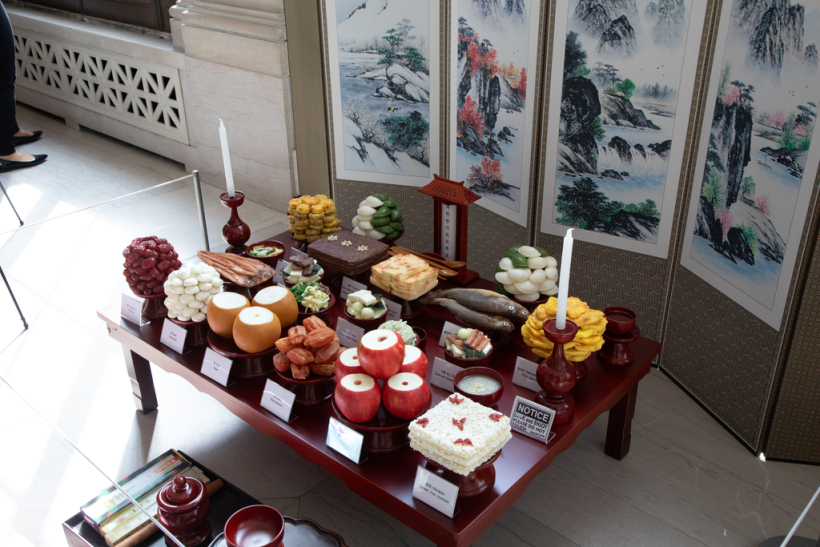Festival to Feature Interactive Activities, K-pop Dance and Live Korean Wrestling Demonstrations
The Smithsonian’s National Museum of Asian Art has announced its 2025 family festival commemorating Chuseok, known as Korean Thanksgiving Day. The event takes place Saturday, Oct. 4, 11 a.m.–4 p.m. It is free and open to the public.
 Food, crafts, family activities and special performances (including K-pop dancing and traditional arts) are on the schedule. This year’s event features live demonstrations and interactive workshops featuring 씨름 (Ssireum), Korea’s traditional wrestling—an age old sport celebrated during holidays like Chuseok and inscribed on UNESCO’s Intangible Cultural Heritage list.
Food, crafts, family activities and special performances (including K-pop dancing and traditional arts) are on the schedule. This year’s event features live demonstrations and interactive workshops featuring 씨름 (Ssireum), Korea’s traditional wrestling—an age old sport celebrated during holidays like Chuseok and inscribed on UNESCO’s Intangible Cultural Heritage list.
The full list of activities is available online.
Along with its annual celebration to honor Korean art and culture, the National Museum of Asian Art offers many digital resources to learn about Chuseok, such as virtual tours of related collections, lesson plans and videos.
The Korean festival of Chuseok (literally, “autumn evening”) is celebrated in the eighth month of the lunar calendar when the moon is at its fullest. Associated with the harvest, the festival is a time for families to gather and give thanks to their ancestors. Together with Lunar New Year, it is one of the most important holidays in Korea and is marked by many traditions.
More than 7,000 people attended the National Museum of Asian Art’s Chuseok festival in September 2024.
Credit
This event is copresented by the Korean Cultural Center Washington D.C., and the Korean Ssireum Association. Support for this event is provided by the National Museum of Korea.
About Smithsonian’s National Museum of Asian Art
The Smithsonian’s National Museum of Asian Art is committed to preserving, exhibiting, researching and interpreting art in ways that deepen the public and scholarly understandings of Asia and the world. The museum opened in 1923 as America’s first national art museum and the first Asian art museum in the United States. It now stewards one of the world’s most important collections of Asian art, with works dating from antiquity to the present, from China, Japan, Korea, South Asia, Southeast Asia, the pre-Islamic Near East and the Islamic world (inclusive of Central Asia, the Middle East and North Africa). The museum also stewards an important collection of 19th- and early 20th-century American art.
Today, the National Museum of Asian Art is emerging as a leading national and global resource for understanding the arts, cultures and societies of Asia, especially at their intersection with America. Guided by the belief that the future of art museums lies in collaboration, increased access and transparency, the museum is fostering new ways to engage with its audiences while maintaining its commitment to excellence.
Located on the National Mall in Washington, D.C., the museum is free and open 364 days a year (closed Dec. 25). The Smithsonian, which is the world’s largest museum complex, welcomes 20–30 million visitors yearly. For more information about the National Museum of Asian Art, visit the museum’s website.
